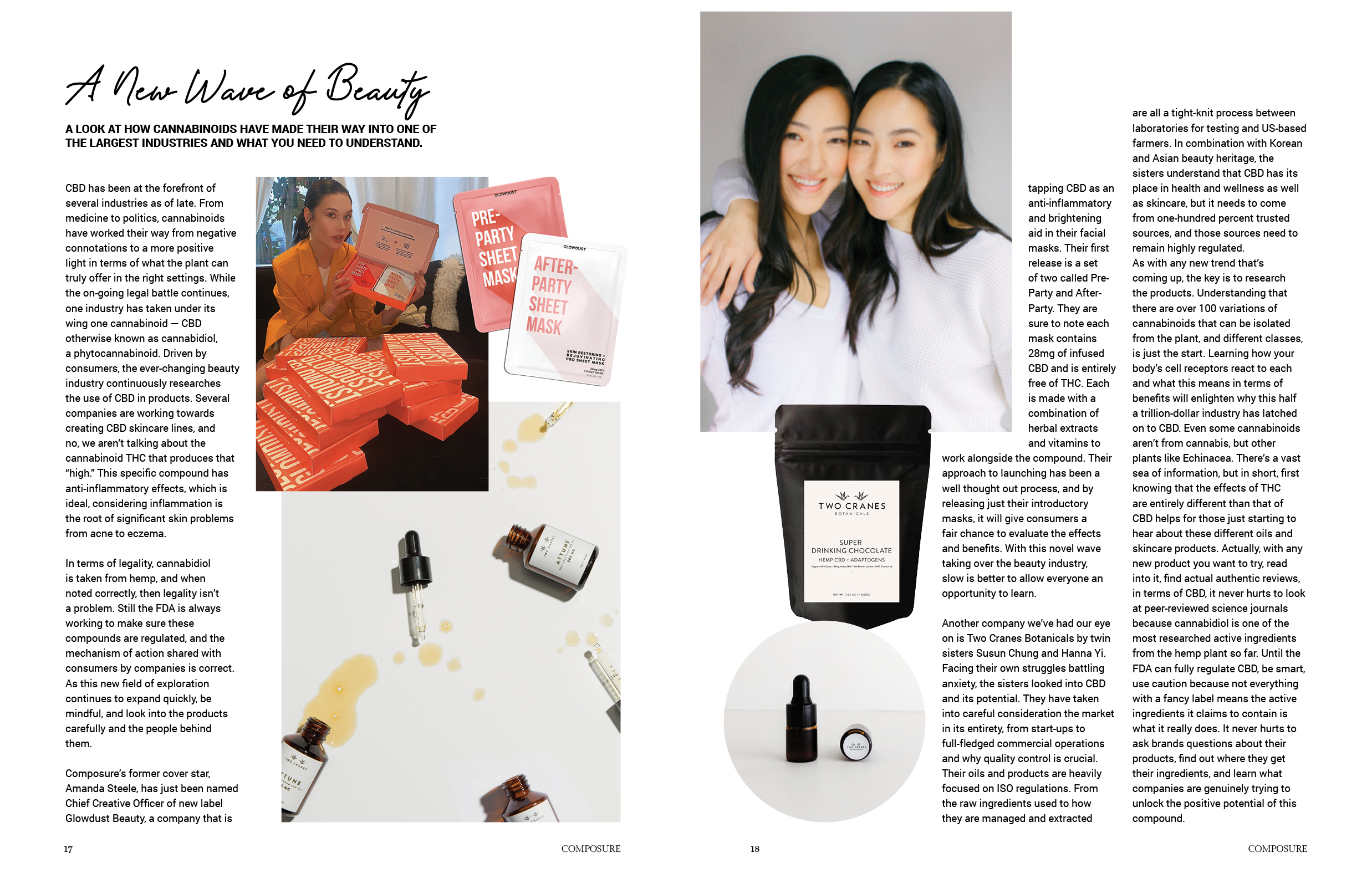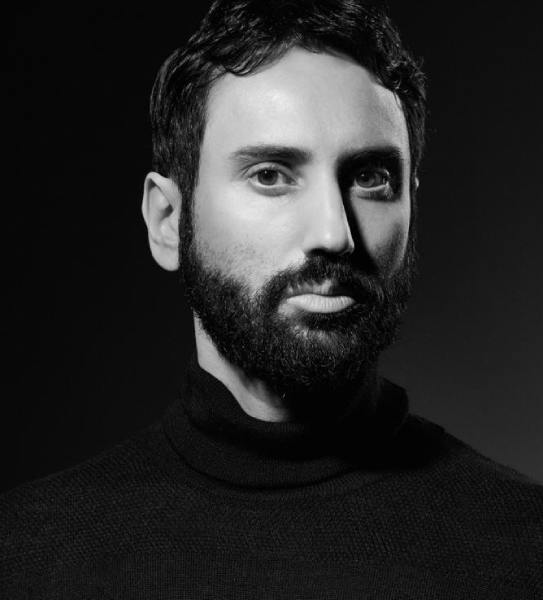Story by Min A. Lee
A look at how cannabinoids have made their way into one of the largest industries and what you need to understand.
CBD has been at the forefront of several industries as of late. From medicine to politics, cannabinoids have worked their way from negative connotations to a more positive light in terms of what the plant can truly offer in the right settings. While the on-going legal battle continues, one industry has taken under its wing one cannabinoid — CBD otherwise known as cannabidiol, a phytocannabinoid. Driven by consumers, the ever-changing beauty industry continuously researches the use of CBD in products. Several companies are working towards creating CBD skincare lines, and no, we aren’t talking about the cannabinoid THC that produces that “high.” This specific compound has anti-inflammatory effects, which is ideal, considering inflammation is the root of significant skin problems from acne to eczema.
In terms of legality, cannabidiol is taken from hemp, and when noted correctly, then legality isn’t a problem. Still the FDA is always working to make sure these compounds are regulated, and the mechanism of action shared with consumers by companies is correct. As this new field of exploration continues to expand quickly, be mindful, and look into the products carefully and the people behind them.
Composure’s former cover star, Amanda Steele, has just been named Chief Creative Officer of new label Glowdust Beauty, a company that is tapping CBD as an anti-inflammatory and brightening aid in their facial masks. Their first release is a set of two called Pre-Party and After-Party. They are sure to note each mask contains 28mg of infused CBD and is entirely free of THC. Each is made with a combination of herbal extracts and vitamins to work alongside the compound. Their approach to launching has been a well thought out process, and by releasing just their introductory masks, it will give consumers a fair chance to evaluate the effects and benefits. With this novel wave taking over the beauty industry, slow is better to allow everyone an opportunity to learn.
Another company we’ve had our eye on is Two Cranes Botanicals by twin sisters Susun Chung and Hanna Yi. Facing their own struggles battling anxiety, the sisters looked into CBD and its potential. They have taken into careful consideration the market in its entirety, from start-ups to full-fledged commercial operations and why quality control is crucial. Their oils and products are heavily focused on ISO regulations. From the raw ingredients used to how they are managed and extracted are all a tight-knit process between laboratories for testing and US-based farmers. In combination with Korean and Asian beauty heritage, the sisters understand that CBD has its place in health and wellness as well as skincare, but it needs to come from one-hundred percent trusted sources, and those sources need to remain highly regulated.
As with any new trend that’s coming up, the key is to research the products. Understanding that there are over 100 variations of cannabinoids that can be isolated from the plant, and different classes, is just the start. Learning how your body’s cell receptors react to each and what this means in terms of benefits will enlighten why this half a trillion-dollar industry has latched on to CBD. Even some cannabinoids aren’t from cannabis, but other plants like Echinacea. There’s a vast sea of information, but in short, first knowing that the effects of THC are entirely different than that of CBD helps for those just starting to hear about these different oils and skincare products. Actually, with any new product you want to try, read into it, find actual authentic reviews, in terms of CBD, it never hurts to look at peer-reviewed science journals because cannabidiol is one of the most researched active ingredients from the hemp plant so far. Until the FDA can fully regulate CBD, be smart, use caution because not everything with a fancy label means the active ingredients it claims to contain is what it really does. It never hurts to ask brands questions about their products, find out where they get their ingredients, and learn what companies are genuinely trying to unlock the positive potential of this compound.






